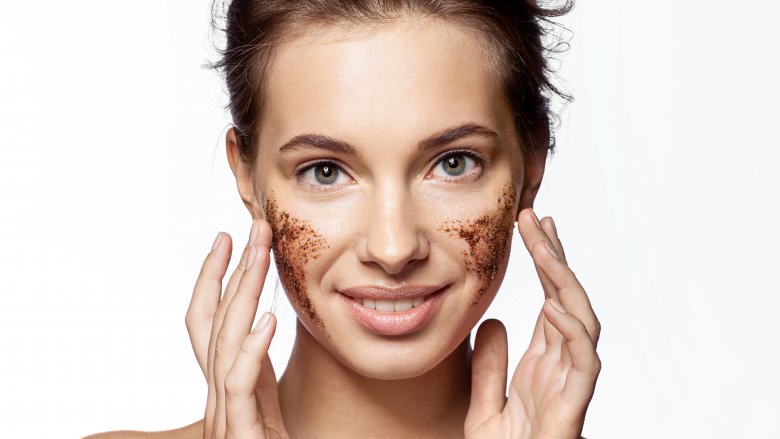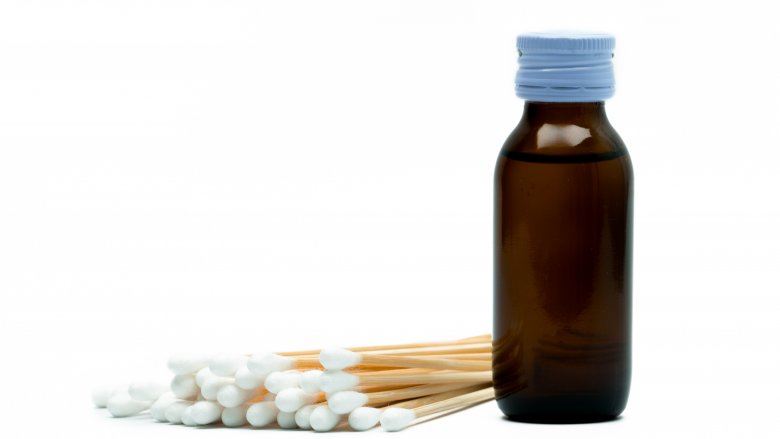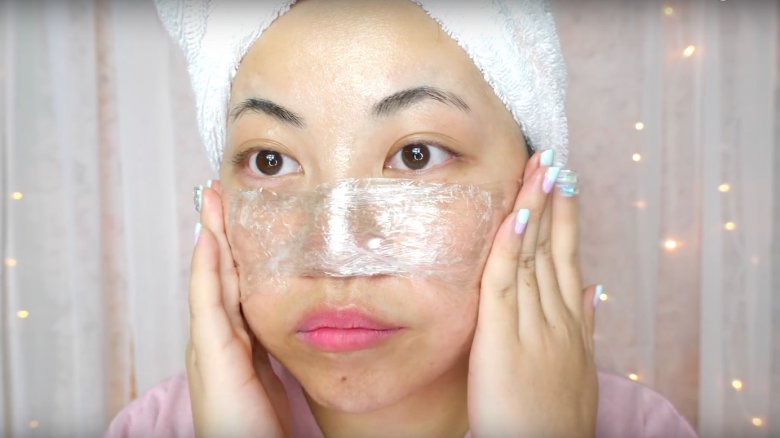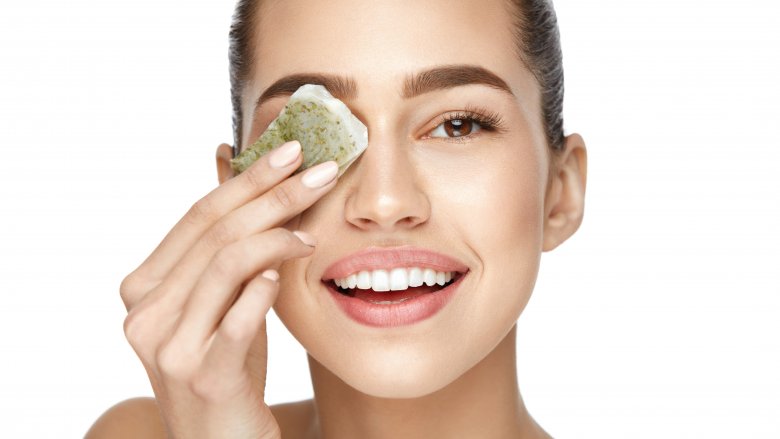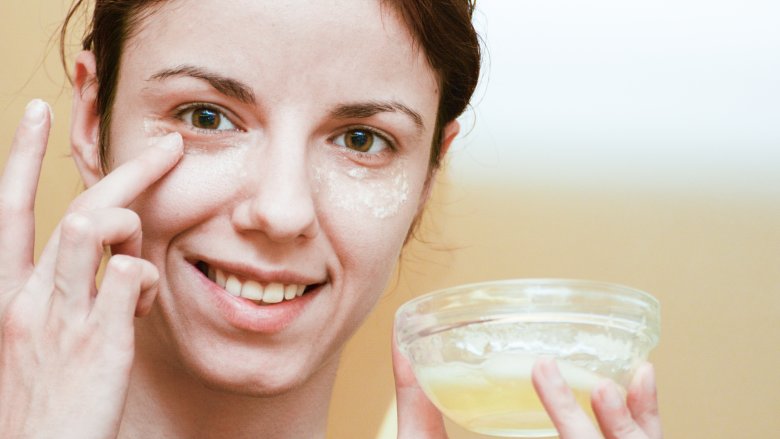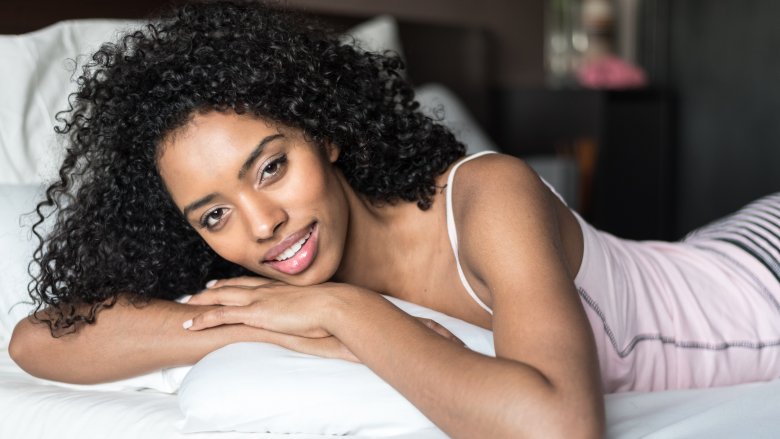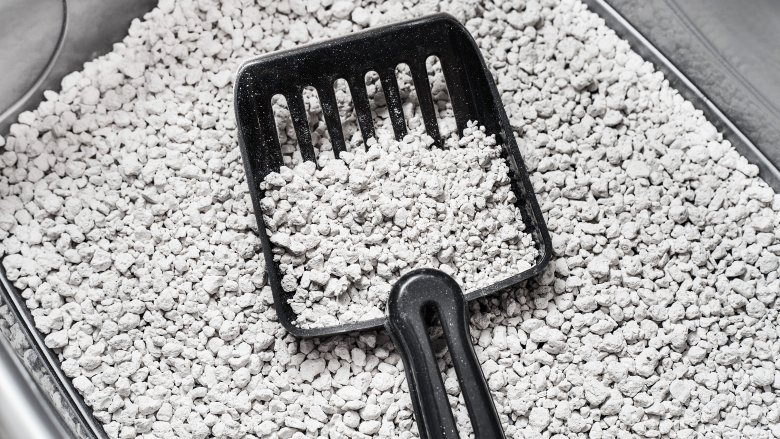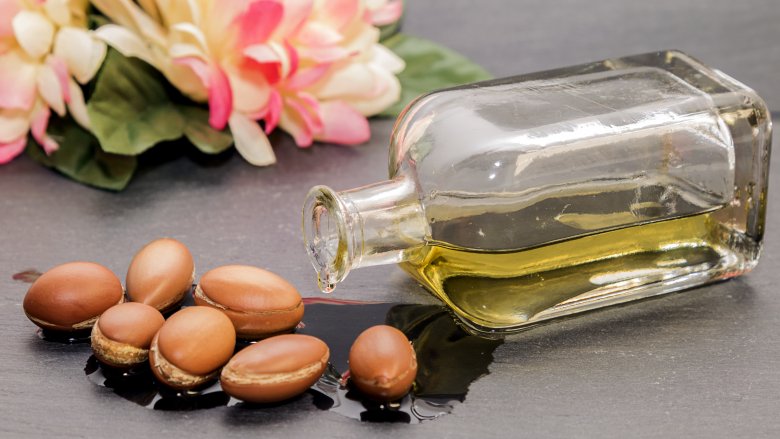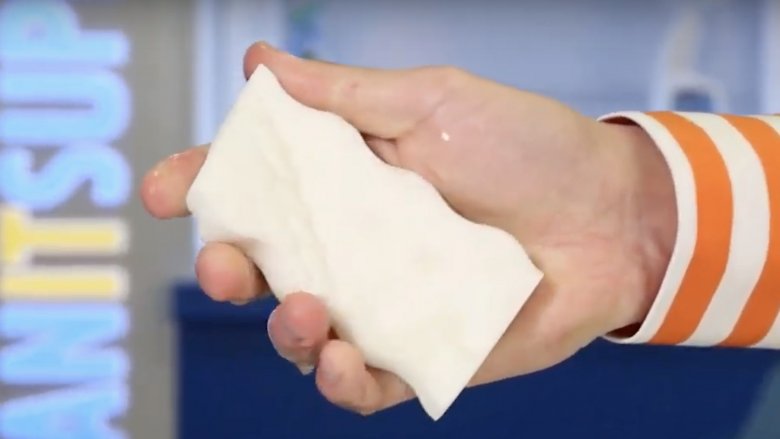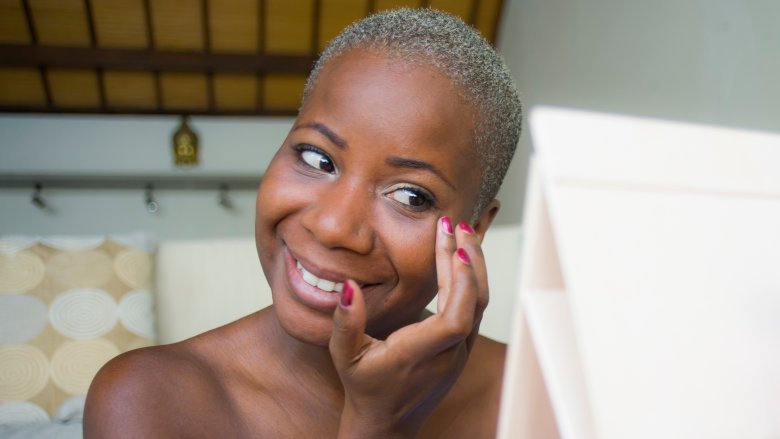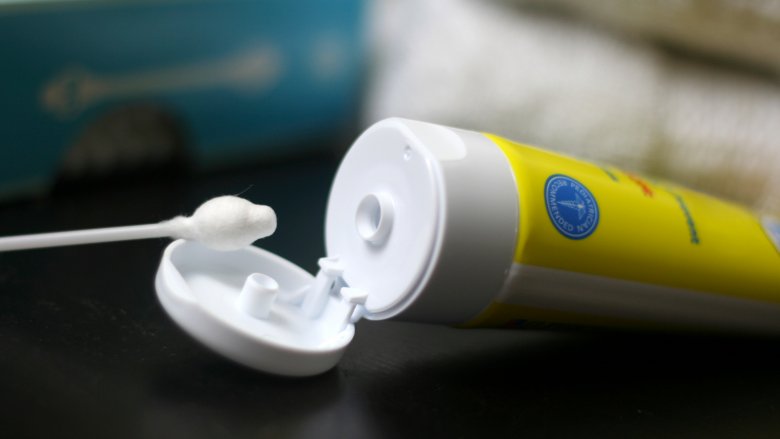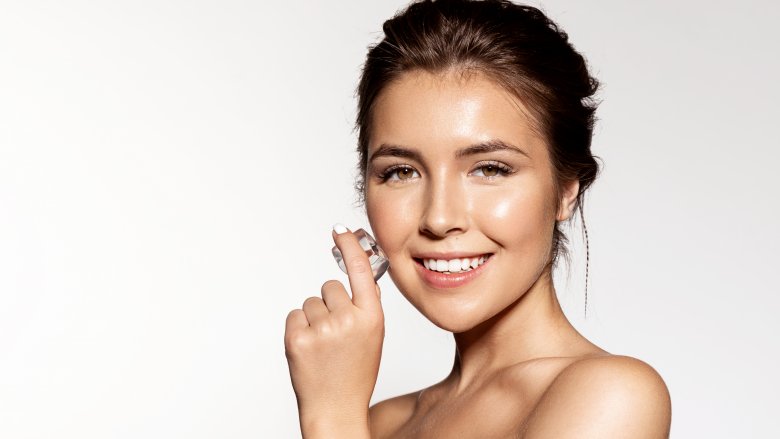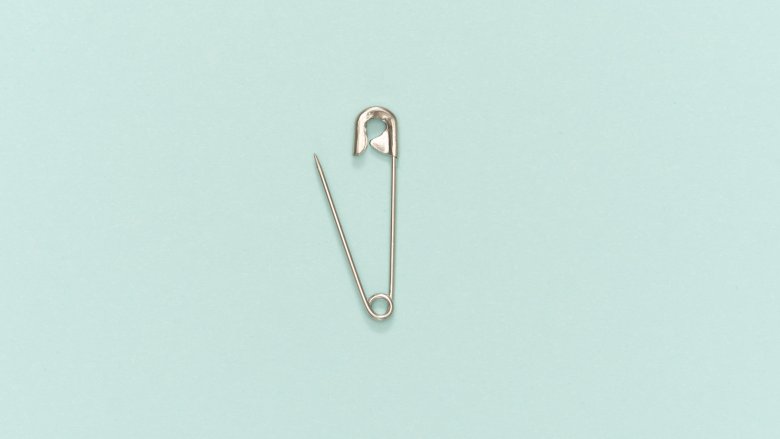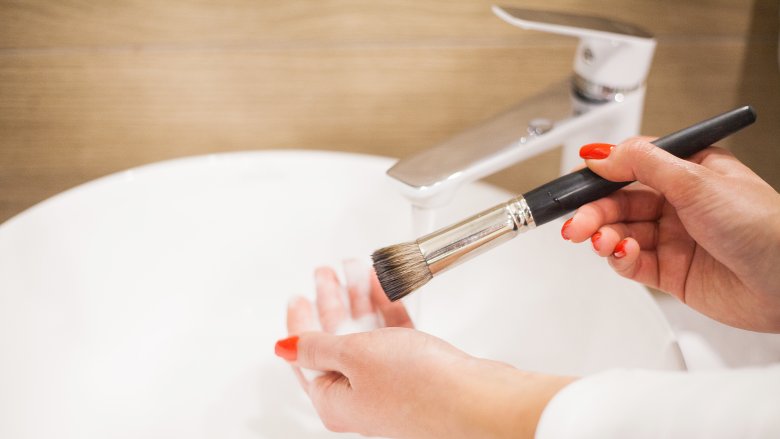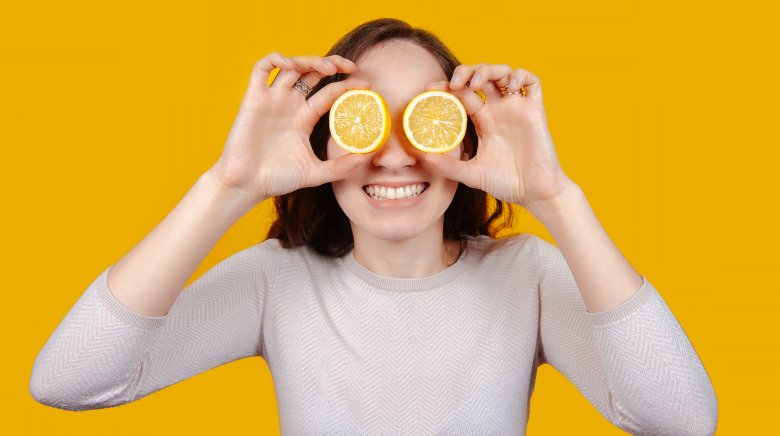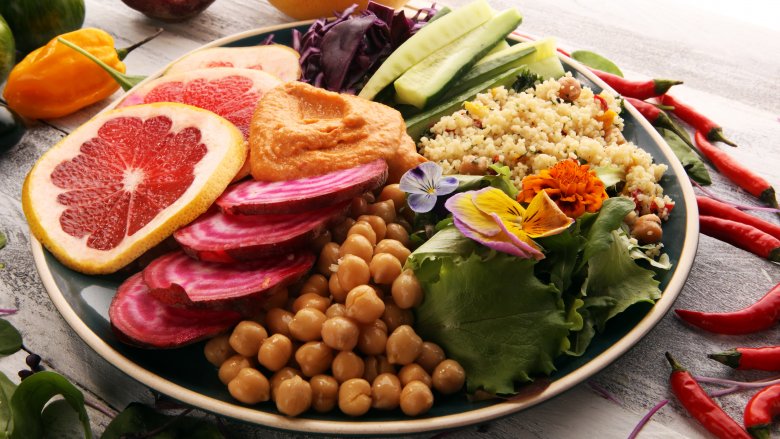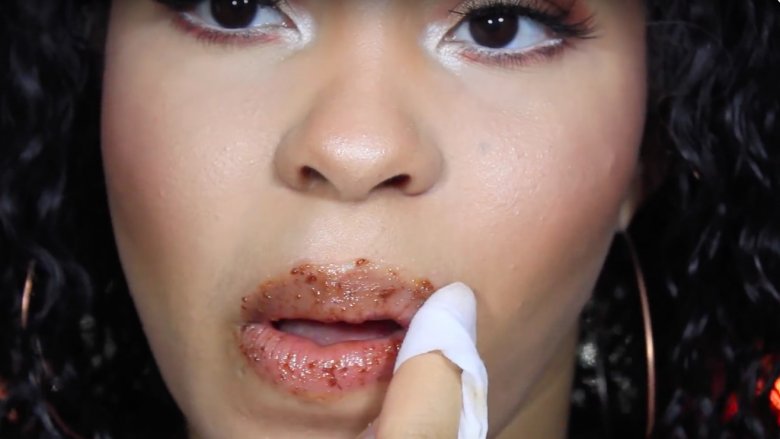8 Best And 8 Worst Beauty Hacks
Beauty hacks are all over Instagram. From DIY makeup applicators made out of diapers — albeit clean ones — to milk cream and yogurt exfoliating creams, there's certainly a variety of weird, wonderful, and wild suggestions making their rounds on social media. While there's nothing wrong with wanting to save a few bucks on beauty products or turning to natural alternatives, you can't always tell how well a beauty hack will work just by a picture or video on social media. Worse yet, you can't always tell just how safe these hacks are. Some are actually pretty dangerous.
Thankfully, experts have weighed in on some of the most popular trends and revealed which ones are worth giving a try and which ones have no place in your beauty routine. We've rounded up eight of the very best — and eight of the very worst — beauty hacks on the internet. Here's what you need to know about them.
Best: Peroxide pore reducer
While hydrogen peroxide should not be used indiscriminately, it can definitely become a part of your beauty routine. Not only is it extremely inexpensive, it's also equally effective. Manish Shah, a board-certified plastic surgeon in Denver, Colo., told American Spa that using peroxide on your T-Zone — the central part of your face, which includes part of your forehead, nose, and chin — can work wonders.
If you've noticed enlarged pores in this area of your face, this is likely because of inflammation caused by bacteria. Bacteria is also responsible for those pesky blackheads that crop up on the tip of your nose. The good news? "These bacteria can't survive in high oxygen environments," Shah explained. That means peroxide will take care of them, no problem. "Treating just the T-Zone at night kills the bacteria, reduces pore size, and blemishes," the doctor added, suggesting people use a "3 percent hydrogen peroxide." However, peroxide can dry out your skin if overused, so it's still important to be mindful when using.
Worst: Melting blackheads
If you find hydrogen peroxide too drying to use on a regular basis, you might want to try something else to conquer blackhead breakouts. But if you're thinking of extracting your own blackheads, you should know it's not recommended. One beauty hack that promises to "melt blackheads" suggests coating your face in Vaseline and then covering the skin with plastic wrap. Similar hacks also call for placing a hot towel against the covered skin. While this trick may very well open up your pores and make your blackheads easy to squeeze and pop, it's really terrible for your skin.
First, extracting your own blackheads can cause irritation and induce redness, and there's a potential for scarring. Also, the last thing you want to do if you have acne-prone skin is slather petroleum jelly all over it. "It may be a great option if you are struggling with dry skin," dermatologist and RealSelf contributor Sejal Shah told Self. "However, applying Vaseline to the skin may actually promote the development of clogged pores and acne." In other words: more blackheads.
Best: Tea bags for under-eye bags
While you may have thought your grandmother was crazy for placing teabags over her eyes, she was actually on to something. This beauty hack may predate the internet, but that doesn't mean it hasn't found its way online. And, in this case, there's a good reason: It actually works.
Dermatologist Sandra Lee — you may know her as Dr. Pimple Popper — told The Pretty Pimple why the antiquated teabag hack is still one worth giving a go. "This trick works because the astringent nature of the tannins and caffeine in tea can help constrict blood vessels and capillaries under the eyes. It helps to minimize fluid retention and puffiness in the area," the dermatologist revealed.
For puffiness below your eyes, black tea works best. Just make sure the teabags you use are still warm, though not hot, when placing over such a sensitive area. After just a few minutes, the reduction in inflammation should be noticeable.
Worst: Egg white masks
You might also remember your Granny using eggs in her beauty routine. While she may have slathered it in her hair and on her face without thinking twice about it, we don't exactly have that, um, luxury today. Salmonella in eggs wasn't an issue to be concerned about until the late '70s and early '80s (via The New York Times). Today, however, the bacterium is one of the most common causes of food poisoning in the United States. Nevertheless, you'll see plenty of beauty vloggers touting the benefits of egg white masks.
While these masks do as many people claim, including shrinking your pores, the health risks outweigh the benefits. Salmonella can be extremely dangerous and even fatal. Instead, why not try an egg extract mask? Mona Gohara, a dermatologist in Danbury, Conn. and a clinical faculty member at Yale New Haven Hospital, told Women's Health that these masks are not made using raw eggs, so there's no risk of contracting salmonella.
Best: Snoozing on silk pillowcases
When you first heard about the silk pillowcase beauty hack, we wouldn't blame you if you were skeptical. Yet they seem to be the real deal. "Cotton pillowcases can potentially absorb moisture and hydration from skin and hair leaving the skin dehydrated and increasing the appearance of fine lines," Marnie Nussbaum, a dermatologist in New York City, told MSN. Silk, on the other hand "helps the skin stay hydrated," according to the expert. In turn, this can help protect against acne.
Celebrity hairstylist Jen Atkin also recommends silk pillowcases. "With regular use, I've slept better, my hair is shinier, and it's less prone to breakage," she told the publication. Silk pillowcases can even help keep your blowout looking nicer longer. "Silk allows the hair to move easily over the pillowcase without friction, thereby keeping its style," Nussbaum noted. "It also allows the hair to keep its natural oils and prevents frizz and dehydration." Silk pillowcases may just be the perfect way to get some beauty sleep.
Worst: Kitty litter face masks
There are some things in life you never think you'll have to say, like, "Don't put kitty litter on your face." But here we are. Thanks to the internet, these unusual face masks managed to become popular. Believe it or not, though, there is actually some science behind slathering your face in kitty litter. Dermatologist Jason Emer told Allure that kitty litters that are clay-based often contain a couple of ingredients that are also used in common skin-care products: silica and bentonite. Both ingredients absorb oils and hold in moisture, which is what many people are looking for in their facial products and, yes, in their kitty litter too.
While silica and bentonite are safe to use on your skin, dermatologist Joshua Zeichner told Allure that it's all of the other stuff in kitty litter that makes it a bad idea to — you guessed it — rub it on your face. According to both dermatologists, using a clay-based face mask is a much better alternative because, you know, it's meant for your face.
Best: Argan oil masks
Argan oil is an ingredient you'll find in many beauty products, including body lotions, shampoo, and even makeup. The oil, which is made from the seeds of the fruit from argan trees, is especially beneficial to the skin because of its anti-inflammatory properties. Of course, how much argan oil is in these different beauty products varies. But you can skip the middleman and just use argan oil on its own, as many beauty vloggers have learned. This hack is indeed a good one.
When speaking to Skincare.com, dermatologist Dhaval Bhanusali recommended using argan oil for dry skin. "Use argan oil as a mask one to two times per week at night and go to sleep," Bhanusali advised. "It helps hydrate, leaving skin feeling soft and supple." Argan oil can even be used on acne-prone skin, according to dermatologist Samer Jaber in New York City (via HuffPost). While coconut oil can prove to be too much for this skin type, argan oil is much lighter, so it shouldn't cause breakouts.
Worst: Adding Mr. Clean to your beauty routine
If you've ever used Mr. Clean Magic Eraser to remove scuffs from your walls, you know that it's basically, well, magic. However, that doesn't mean it's wise to start using the product on yourself. People have discovered that it works to remove unwanted spray tan lines, but this hack is a dangerous one. "As a general rule, it's never a good idea to use a household product on your skin," Randy Schueller, a cosmetic chemist and the cofounder of Thebeautybrains.com told Allure. "They're not subject to the same safety testing requirements as personal-care products." Although Mr. Clean Magic Erasers don't contain "harsh" chemicals, the product is made out of melamine foam, which is very abrasive. It could also trigger an allergic reaction.
Others have found that the foam produced by the Magic Erasers can also whiten teeth — not that it should. "It might remove stains, but the idea of putting a cleaning product in your mouth that isn't designed for oral use is total insanity," Marc Lowenberg, a dentist in New York City, told the publication.
Best: Chafing gel primer
Chafing gel is great for chub rub, sure, but have you ever tried using it as a makeup primer? It may sound a little out there, but it's a legit beauty hack. Both chafing gels and makeup primers share the same primary ingredient: dimethicone. Whitney Bowe, a dermatologist and clinical assistant professor of dermatology at Icahn School of Medicine at Mount Sinai Medical Center, explained the hype when speaking to Shape. "Dimethicone doesn't clog pores but gives you a nice, smooth finish and temporarily fills in lines and wrinkles," she revealed.
This "smooth finish" is one of the reasons so many people like traditional makeup primers to begin with. And, while it does definitely sound like a strange choice to use chafing gel on your face, the product can work just as well as some of the more expensive makeup primers — and at only a fraction of the cost.
Worst: Spot-treating with diaper cream
We know we just told you its okay to put chafing gel on your face, but that hack does not apply to diaper cream. In a video she shared to Instagram, beauty blogger Farah Dhukai revealed a new way to treat acne. "Apply as a spot treatment to all your acne spots, let it dry and go to bed. Wash off in morning," she wrote in the caption of her Instagram video. "Or you can apply this all over your face as a night time sleeping mask and wash off in the morning." While Dhukai promised that "your face will be as smooth as a [baby's] butt," there's a little more to it than that.
New York City-based dermatologist Leslie Gerstman told InStyle that most diaper creams contain two main ingredients: zinc and petroleum. "Zinc is typically a good ingredient, it's anti-inflammatory and it's good for wound healing and that's essentially what a pimple is," she explained. "However, the petroleum is a protective agent, which is why it's good for babies — it protects the skin." It's not good for acne, however, because "you're completely closing the pores" with the petroleum, according to the doctor. Eek.
Best: Icing razor burn
You've probably heard that using ice to treat a burn can make matters worse. That's true, though razor burn is an exception. And, to be fair, razor burn isn't actually a burn at all. Instead, razor burn is a form of skin irritation that some people experience after shaving. You might experience redness or even bumps after shaving if you are prone to razor burn. Oh, and it's hella painful. Even if you don't get razor burn routinely, anyone who shaves can experience it.
Thankfully, there's a way to get some quick relief. Dermatologist Dhaval Bhanusali told Skincare.com that icing razor burn is a worthwhile hack. Over the course of a few minutes, alternate between putting ice on and off the inflamed area. The dermatologist said this will help reduce the burn's appearance — at least until you can get to the store to find a product to heal the irritated skin.
Worst: Pimple-popping with pins
If you've ever had one of those pimples that more closely resembles Mount Vesuvius than your run-of-the-mill zit, we understand why you'd want to make it erupt. But, whatever you do, don't stick a pin in it. It may sound like it'd bring instant relief to just shove a safety pin in that sucker, but it's only going to make everything worse. And that's true even if you thought to sanitize the pin first.
"When you break the skin, the bacteria that's on your face can penetrate it, and the contents of the pimple get pushed deeper," dermatologist Heidi Waldorf confirmed to Allure. "All that irritation is going to take much longer to heal and can lead to scarring." Although popping pimples is almost never a good plan, dermatologist Jason Emer offered up a safer alternative. "Using two Q-tips against either side of the pimple will help limit any trauma to the surrounding skin," he explained. Be sure to disinfect and use antibiotic ointment afterward as well.
Best: Easy cleaning of makeup applicators
Cleaning makeup sponges and brushes may be one of those tasks you never feel like doing, but it is necessary. "People almost never clean them, and they can transfer dangerous bacteria from your bathroom right to your face," New York City-based dermatologist Susan Bard told Shape. According to the expert, dirty makeup brushes are responsible for causing both illnesses and infections. Yuck.
Although there's no hack that can get you out of cleaning your makeup tools completely (boo!), there are a couple hacks that make the process easier. For one, you can microwave your makeup sponges in a cup full of water and brush cleanser, though microwaving may reduce their lifespan. As for your makeup brushes, well, you can't put them in the microwave, but you can skip the expensive cleansers and just rub the bristles into some bar soap, which is one type of cleaning agent Susan Bard recommends, for easy cleaning (via Into the Gloss).
Worst: Lemon juice lightener
Lemon juice has made its way into all kinds of beauty hacks. From fading acne scars to lightening dark spots to you name it, it's all been done. Lemon juice may indeed work, in a sense, but that doesn't make it safe. "This is not okay to use!" Mona Gohara, a Connecticut-based dermatologist and clinical faculty member at Yale New Haven Hospital, warned when speaking to Women's Health.
What's the big deal? "Lemon is acidic and can alter the pH of your skin, destroying the barrier, making it easily inflamed, irritated, and even scarred," she elaborated. Combine lemon juice with natural sunlight and you're in for an even worse situation. "When citrus juice interacts with ultraviolet light, it can cause a chemical reaction on your skin," Gohara explained, describing a condition dubbed "lime disease" — not to be confused with Lyme Disease — to Good Housekeeping. "The result is usually a pink, red, or purple patch on your skin." It can also result in hyper-pigmentation. For those trying to get rid of dark spots, you'll only be going to the other extreme by using lemon juice.
Best: Treating skin from within
Good news! Rubbing lemons on your skin may be a bad idea, but consuming lemons is just fine — it's even preferred. In fact, what you eat is probably the best beauty "hack" you could ever try. "Fruits and vegetables are high in antioxidants which give glow to the skin," Manish Shah, a board-certified plastic surgeon, told American Spa.
Kathleen Suozzi, assistant professor of dermatology and director of aesthetic dermatology at Yale School of Medicine, dermatologist Sandra Lee, and registered dietitian Lisa Moskovitz confirmed to Insider that a healthy diet of water, fruits, vegetables, protein, and healthy fats will encourage healthy skin. In particular, foods like blueberries, strawberries, tomatoes, avocados, and salmon can do a world of good for your skin.
Instead of slathering zinc-based diaper cream on your face, why not just eat zinc-rich spinach? "Zinc has a lot of wound healing properties," Moskovitz explained. "There's also some evidence showing that it can help with breakouts." Additionally, bone broth is "a good source of natural collagen," according to the dietitian.
Worst: Lip plumping with spices
Herbs and spices can, of course, be eaten, and some types can even safely be rubbed into the skin. Cinnamon, however, is not one of them. Still, "DIY natural lip plumping" is a popular beauty hack that promises plump lips with the use of ground cinnamon. Now, this hack will work, but you still shouldn't try it! "Cinnamon actually plumps by being inflammatory. You're putting it on the lips to get inflammatory swelling," New York-based dermatologist Patricia Wexler revealed to Self. "The best way to get lip plumping would be to use a hyaluronic acid or silicones."
Even if you plan to use cinnamon more for its holistic properties than its cosmetic abilities, it's still not advised. "You wouldn't get enough of a concentration of cinnamon and you can probably even get blisters," dermatologist Doris Day told CNN. "It's a spice," she put it bluntly. "If you put pepper on your skin, you can burn your skin." Noted.
